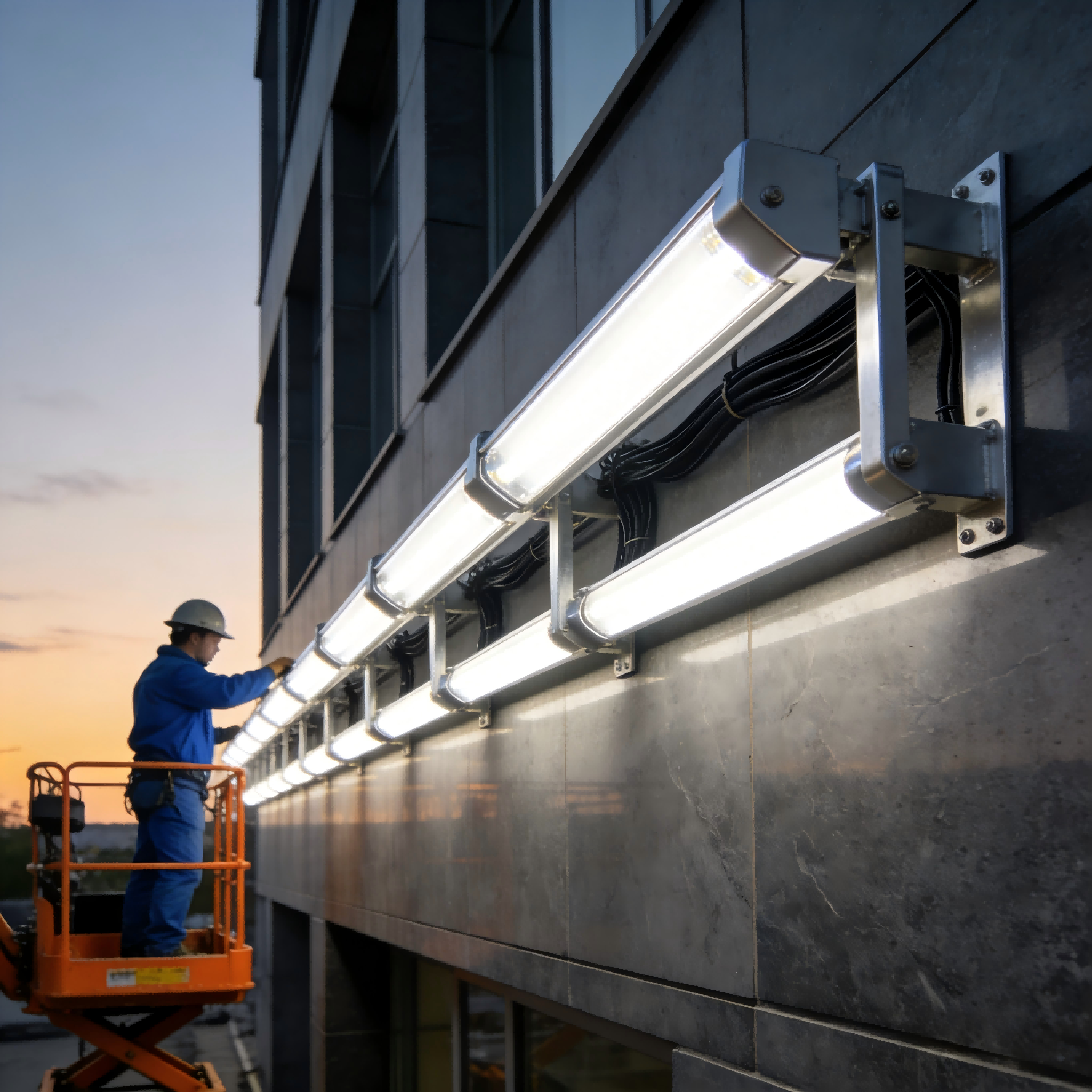
This guide explains facade lighting as an integrated discipline that combines architectural intent, optical engineering and operational control to shape a building’s nighttime identity. It covers core fixture types (wall washers, linear lights, floodlights, pixel modules, light-guide panels), the four technical stages from LEDs to IoT control, six practical design principles (contrast, color fidelity, uniformity, glare control, sustainability, maintainability), common project pitfalls, five application scenarios (hotels, CBD towers, mixed-use, bridges, cultural buildings), and three detailed case studies demonstrating bespoke solutions for complex façades. The emphasis throughout is on delivering durable, high-quality outcomes via purpose-built optics, system-level planning and intelligent lifecycle management rather than ad-hoc fixture procurement.
READ MORE>>
2025-12-19 16:30

This article provides a comprehensive, system-level guide to Facade Lighting Installation, outlining how thoughtful planning, precise engineering, and disciplined on-site execution transform a building into a durable nighttime landmark. It explains how façade lighting enhances architectural form, builds nighttime identity, improves safety, and creates long-term asset value. The guide details essential steps in surveying, photometric planning, fixture selection, electrical engineering, installation craftsmanship, commissioning, and long-term maintenance. With its focus on reliability, environmental adaptation, and digital-twin operations, the article demonstrates how façade lighting can achieve consistent visual performance and operational longevity far beyond the initial installation.
READ MORE>>
2025-12-12 17:45

LED lifetime is not a marketing hours number — it’s the KPI that determines a project’s TCO and the nightscape’s long-term appearance. To turn vendor claims into predictable outcomes, prioritize thermal management, driver quality and materials/sealing from day one: use Tj = Ta + Pd × RθJA for first-order checks, validate heat paths with CFD plus instrumented mock-ups, and insist on 72-hour burn-in and documented surge/aging data for drivers. Lock optical requirements (tight binning, SDCM ≤ 3) and UV-stable optics into the spec to avoid “patchy wall” effects, and favor structural waterproofing with corrosion-resistant hardware over indiscriminate potting. When budgets are tight, spend in this order — thermal → driver → materials — and do three things now: set and validate Tc targets, require driver burn-in plus surge specs in procurement, and include optical binning and anti-corrosion clauses in your contract.
READ MORE>>
2025-12-05 15:47

This guide explains why IK (IEC 62262) matters alongside IP (IEC 60529) for outdoor facade, bridge, and landscape lighting, and it gives practical IK/IP pairings for common applications (façades IK06–IK08, bridges IK08–IK10, ground/landscape IK09–IK10). It shows how IK is achieved in material and structural design (energy-absorption vs. rigid strength), highlights testing and procurement best practices (inspect IEC 62262 test reports, demand post-impact IP retests and aging+impact tests), and includes illustrative case studies demonstrating lower maintenance and better TCO after upgrading IK. Use the provided specification language and checklist to convert design intent into enforceable tender requirements.
READ MORE>>
2025-11-27 17:19

IP65+ is not an optional label—it is the foundation of long-term reliability for exterior lighting. While the IP rating keeps water and dust out, true long-term performance depends on the right materials, durable seals, corrosion-resistant finishes, verified lab testing (IP/IK/salt-spray, LM-80/LM-79), and correct installation practices such as proper cable sealing, drainage-friendly mounting angles, and gasket maintenance. When you treat product selection, testing, and installation as one integrated process—and increase protection to IP66/67 for wash-down areas or coastal environments—you typically exchange a small amount of upfront investment for dramatically lower maintenance costs, more stable nighttime appearance, and far fewer emergency repairs.
READ MORE>>
2025-11-24 10:04

Brightness and illuminance are two essential concepts in architectural and outdoor lighting design, and understanding their differences is the key to creating visually impactful, comfortable, and energy-efficient night environments. Brightness is a subjective perception shaped by materials, reflectance, texture, and the human visual system, while illuminance is an objective measurement in lux that determines how much light reaches a surface. Designers must balance both to achieve clear visual hierarchy, optimal safety, glare control, and sustainable performance across facades, bridges, roads, and public spaces. With its precision-engineered wall washers, linear lights, and outdoor lighting systems.
READ MORE>>
2025-11-15 12:00


